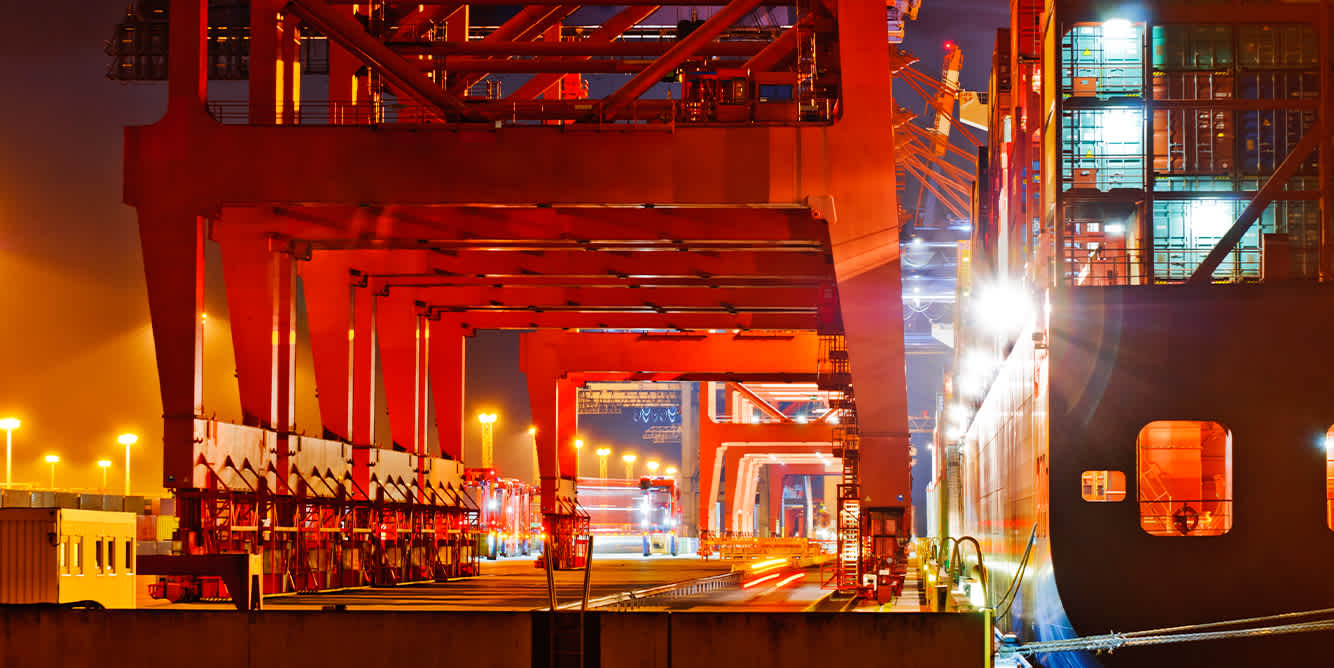
August 26, 2020
For Container Shipping in a Post-Covid Reality, Ports and Business Innovate for Resilience
For Container Shipping in a Post-Covid Reality, Ports and Business Innovate for Resilience
The impact of Covid-19 has touched every point in the supply chain, including ports. As a new normal emerges, carriers and port authorities are striving to simplify operations, enhance technology, and make room for better days ahead. Container shipping is prompting ports of all sizes to reinvest in optimizing for a more effective post-Covid-19 world. For many businesses, it’s a good example to follow.
Automation and Digitization
The call for automation is here. COVID has made it clear that a lack of global data exchange systems complicates disaster responses. A paper-based chain from ship to port to hinterland can’t meet today’s trade demands effectively.
As Lloyds Loading List reported in June, the International Association of Ports and Harbors (IAPH) led a group of 10 ports and shipping associations in a June missive, calling for industry-wide digitization as soon as possible.
The proposed solution: the widespread adoption of Port Community Systems. Its goal is to connect multiple data sources on a secure, open platform accessible by carriers, customs, freight forwarders, port authorities, and other stakeholders. Right now, only 49 of the 174 Member States of the International Maritime Organization (IMO) have this level of technology.
Meanwhile, the pandemic has hit retail especially hard, putting a dent in port volumes. The first wave of change, in April, came from a slew of blank sailings that crunched capacity.
While in flux, ports have had to adjust many aspects of operations, including idling or shuttering terminals, reducing hours of access to container shipment yards or closing them entirely on certain days.
What Happens at Port Doesn’t Stay at Port
As carriers have tightened their belts, some port calls have been reduced or eliminated altogether in favor of consolidated routes that are cheaper to run. With skeleton crews and closures, painful delays end up jumbling the supply chain for many businesses. And when this happens, shippers need to revisit landed cost estimates to find the best mix of larger or smaller ports across carriers, including inland transit prices, tariffs related to transshipment, and other costs. All of that underscores the need for adoption of digital technology.
Businesses that rely on digital platforms to help run supply chains are able to override manual processes. The automation that comes with technology lets those managing container shipments take advantage of real-time alerts and communication to head off issues tied to unexpected events. It also enables a more proactive stance by helping them to access—and compare—historic and up-to-the-minute data, including landed costs. And that adds up to agility and resilience.
During a time when a pandemic has forced so many organizations to pivot to remote work environments, Flexport’s web-based platform for global trade has helped users ship from home with more than 99.9% uptime.
Just as the IAPH is urging ports and shipping associations to get on board with digitization, the Flexport platform is designed to bring together entire supply chain streams. With simplifying global trade as the chief goal, the platform unites thousands of logistics professionals. The result: real-time cross-team and cross-continental collaboration, which lowers the chances for delays and fees.
As businesses grapple with the consequences of COVID-19—including uncertainty and a weakened global economy—agility must become part of the fabric of their operational structure. Key to that is technology.
Learn more about how a digital platform can better equip organizations for more efficient and effective cargo shipping.



